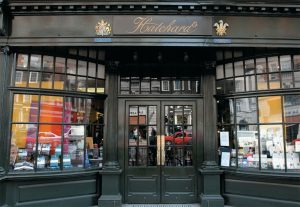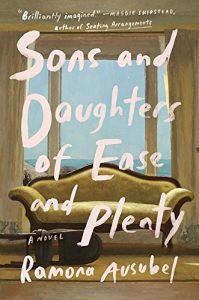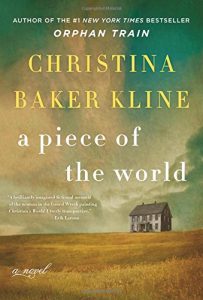Louise Penny again
It seems everyone loves Louise Penny’s series of mystery novels set in the fictional town of Three Pines, Canada. I’ve been a fan since her first, Still Life, and have happily spent many lovely reading hours with the entire series. I also push recommend her novels to anyone unenlightened who hasn’t read Louise Penny.
Glass Houses, her newest in the series will be released August 29th. So dear readers, once again, mark you calendars to call in sick to work, cancel those appointments, and get thee to your local independent bookstore first thing.
I will be reviewing Glass Houses here very soon, thanks to a digital advanced readers copy from the publishers.
In the meantime, here’s a recent CBS Sunday Morning interview with Louise Penny (hmmm the “Penny Posse”, I don’t think so…)
http://www.cbsnews.com/videos/the-world-of-mystery-author-louise-penny/
The Jane Austen Project by Kathleen A. Flynn
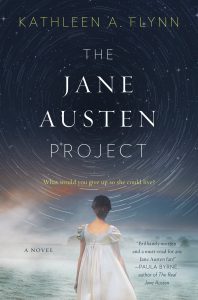 After my last slow, careful reading of Crossriggs, I wanted my next book to be an easier read. But my mind was reluctant to leave the 19th Century. Then, lo and behold, my requested copy of The Jane Austen Project came through from the library.
After my last slow, careful reading of Crossriggs, I wanted my next book to be an easier read. But my mind was reluctant to leave the 19th Century. Then, lo and behold, my requested copy of The Jane Austen Project came through from the library.
I dashed over to my branch, and read the back cover blurb as I walked home — (What do you say, you don’t read and walk? It can be done, albeit carefully in a city) — A Jane Austen time travel piece? Why yes — yes please. Book Barmy readers know I’m a sucker for time travel books.
Dr. Rachel Katzman and Liam Finucaneis come from a technically advanced future where food is 3-D generated, there’s been an ecological die off, and time travel has become successful. As part of a scientifically sanctioned journey, Rachel and Liam are selected and rigorously trained to travel back to 1815. Their assignment is to meet and befriend Jane Austen in order to bring back a trove of lost letters, as well as an unpublished manuscript.
The book opens with our couple waking up from their time travel in a damp Surrey field in 1815, and in forthcoming pages we quickly learn the backstory and the premise of their time travel assignment.
In order to meet Jane Austen, their first task is to integrate themselves with Henry Austen, her favorite brother. They pose as brother and sister, William and Mary Ravenswood from Jamaica looking for investments with Henry who owns several banks in 1815 London. They find a flat in London, purchase clothing, hire servants and begin their adventure.
There much to enjoy in discovering The Jane Austen Project first hand, so I won’t tell you much more about the plot — at the risk of ruining it for you. But I will tell you that Ms. Flynn, an Austen scholar, has created a most realistic time of Jane Austen.
Her descriptions are stellar, giving the reader a true feel of the London streets, the stark contrast of poverty versus the gentility, the food, the servants, the country estates, and the clothing — turns out, 19th century men were the true fashionistas.
I sighed in envy over a scene where William and Mary (Liam and Rachel) go book shopping for Jane Austen’s contemporaries at none-other than, London’s Hatchard’s Bookstore which is still in operation today, just as it has been since 1797.
The Jane Austen Project shines with vivid authenticity, the author weaves in colorful details of the Austens’ lives — how they looked, their family dynamics, their travels, and the state of their health. Ms. Flynn also nails the time period details — manners, morals, habits, and gender roles. Mary (Rachel) is a doctor, but can not publicly use her skills when first Henry, and then Jane, falls ill. She must have William (Liam) pose as a doctor and she advises him from behind the scenes.
The usual time travel rules (yes, there are time travel rules don’t ya know) insist travelers do not impact history. But, right or wrong, Ms. Flynn allows her time travelers to be human, interact with the people of the time and indeed effect small changes. When Mary (Rachel) observes her first chimney boy crawling up her chimney to clean it, she is horrified and pays his boss to release the alarmingly young boy to her custody. Then there’s the scene where Fanny (yes that Fanny) is choking and Mary (Dr. Rachel) automatically uses the Heimlich maneuver, unheard at that time. When Henry Austen proposes marriage to Mary, she must put him off for as long as it takes to complete their assignment. Also, there are changes (obviously fictional) to Jane Austen’s later novels, but I’ll let you discover those imaginative bits for yourself
For me, the pure joy of The Jane Austen Project were the scenes with Jane Austen, Henry, her sister Cassandra, and the various friends and family who are (or will become) characters in her novels. If you’re like me, you’ll hold your breath when our intrepid travelers finally get to meet and share tea with Jane.
Jane, herself, is depicted with a quick intelligence, quiet intensity, and a keen ability to read others. And in 1815, she has already published some of her works. Just imagine being a fly on the wall during this scene where Mary (Rachel) and Jane Austen discuss Pride and Prejudice:
She (Jane) laughed. “Life is full of such oddities is it not? How did Mr. Darcy happen to fall in love with Elizabeth Bennet, when he could have had any lady in the kingdom?”
“Because you made her so lovable?”
“Oh, yes, perhaps that was why.”
While the premise of The Jane Austen Project may seem preposterous (and perhaps it is), this is a fascinating re-creation — an escape into the world of Jane Austen — and I loved every moment of my imaginary and wonderful journey.
Crossriggs by Jan & Mary Findlater
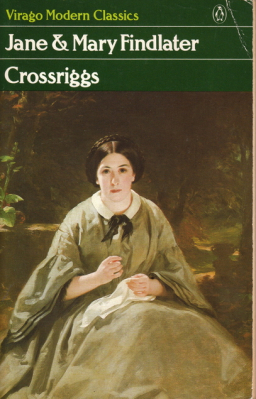 I often roam my favorite book blogs to see what others are reading and recommending. (Just what I need, more to read, but nonetheless, I roam away.)
I often roam my favorite book blogs to see what others are reading and recommending. (Just what I need, more to read, but nonetheless, I roam away.)
Both Eden Rock and Heavenali praised a somewhat obscure Scottish novel called Crossriggs.
My library didn’t have a copy, so I turned to our inter library system. My little book had to travel almost 700 miles from the library at University of California, Long Beach — which cost me nothing. (Most every library has an inter-library loan arrangement for its patrons, and may I just say bravo to our public libraries throughout the country, both big and small.) The loan did come with some stringent rules — I could only renew it once, and late fees racked up at $1 per day. So with that pressure, and after taking a moment to admire the beautiful illustration on the cover –“Lady in Grey” by Daniel MacNee, I opened this book and fell in.
The novel opens with introductions to the principal characters in the small Scottish village of Crossriggs, then the first chapter enticingly sets up the plot:
These, then, were the principal characters in our little world of Crossriggs – a world that jogged along very quietly as a rule, and where “nothing ever happened”, as the children say. Then quite suddenly, two things happened. Matilda Chalmers husband died in Canada, and we hear that she was coming home with all her children to live at Orchard House. That was the first event. The next was that the Admiral’s good-for-nothing son died abroad, and young Van Cassilis, his grandson and heir, came to Foxe Hall. Then and there happenings began.
Crossriggs was written in 1908 by by two sisters who together produced novels, poetry, short stories and non-fiction. At the beginning of their writing career, the sisters were so impoverished, their first works were scribbled and submitted on discarded sheets of grocer’s paper.
This is an old fashioned read, reminiscent of Jane Austen but without all the characters. (I always have trouble keeping Austen’s multitude of characters straight*.) Because Crossriggs takes place in a small village, the characters are limited in number and more manageable for the reader.
Alexandra Hope, our main character, practically sparkles off the pages — full of happiness, love and with ambitions and ideas passed down from her vegetarian, head-in-the-clouds, idealist father…called Old Hopeful. Alex is described as rather plain, but brimming with dreams, imagination and mostly energy. A male admirer in the village describes her best:
“‘Alex,’ he said, ‘you have a genius for living! You just know how to do it . . . You’re alive, and most of us, with our prudence and foresight and realisation of our duties, are as dead as stones!’”
When Alex’s widowed sister Matilda comes home with her five children, the household is not only strained for space, but also for money. Alex adores her sister and children, and happily takes on running the now overflowing household and more than her fair share of caring for Matilda’s children. Alex acquires two jobs to bring in the necessary funds to feed and care the now expanded family. Unlike Alex, Matilda is beautiful but meek, lacking the bravery of her sister. She seemed to be always sewing something (thus the beautiful cover).
Their increased family size and the strain upon the household finances does not trouble Alex’s father , Old Hopeful — he leaves the worrying to Alex:
The ordinary limitations of poverty were nothing to a man of Old Hopeful’s temperament; “A handful with quietness! A dinner of herbs where love is! Who would want more? …What I spent I had: what I save I lost: What I gave I have.”
Old Hopeful is a loving father, and while Alex finds him frustrating, her love for him shines through:
Futile, Quixotic, absurd and unsuccessful, as she knew her father to be, she recognized that he had the right of the argument of life.
The reader can sense the authors took great pains to get everything just right – the characters, the village settings, the weather, the change of seasons — all lovingly crafted. Many of the observations are pure delight:
But the house that had once been the Manse remained much the same always — no bow-windows or iron railings there. A tall man (and the Maitlands were all tall men) had to stoop his head to enter the low doorway – an open door it had always been to rich and poor alike. The square hall was half-dark and paved with black and white flags; the sitting rooms, low-roofed and sunny, wore always the same air of happy frugality with their sun burnt hangings and simple, straight-legged furniture. There was no attempt at decoration for decoration’s sake, only an effect which was the outcome of austere refinement in the midst of plenty.
And this description of the beloved Miss Bessie’s eccentric wardrobe:
Miss Bessie’s taste was not coherent, and as time went on, this want of sequence increased. It seemed as if she could not adhere to a scheme even in braid and buttons, for her bodice would be trimmed with one kind of lace, and her wrists (those bony wrists with their plaintive jingle of bangles) with cascades of another pattern. In her headgear especially she was addicted to a little of everything – a bow of velvet, a silk ribbon, an ostrich tip, a buckle, a wing from some other fowl, and always, always, a glitter of beads.
Crossriggs is definitely a period piece and, like Trollope or Dickens, ones reading must slow to a careful pace. The sisters Findlater are excessive in their use of quotation marks. This can get confusing, as not only are conversations in quotes, but the characters thoughts are also in quotes. I found myself thinking “wait a minute did she actually say that?” “Oh no, she was just thinking it…” See how I use the quotations – confusing. Also, there’s a great many exclamation points, which again, is part and parcel of the period.
But this slow reading pace will reward the reader with some priceless observations and tidbits.
…the faint jangle of the door-bell (the Hopes’ door-bell sounded as if it had lost its voice from talking too much).
and this
“Things are so different when looked at from the outside! Of course they are, that is whey we make most of our mistakes in life.”
For me, the best part of Crossriggs was Alex, I really liked her spirit and found myself cheering her at every insurmountable turn. Towards the end, a great trip is planned…and Alex remains Alex as with this rebuttal about needing a new dress:
“Pooh!, Alex cried. Clothes! Why Matilda, there’s the world – the great round, interesting world to see!”
And who could not relate to her ability to escape into books:
…Alex sat by the fire, snatching half an hour of reading before the children all came tumbling in again. Her thoughts were very far away, for she had the happy power of forgetting the outer world altogether when she read anything that interested her.
The plot takes some twists – some expected and unexpected (there’s an accidental death that shook me for hours), but it’s the village life, the characters and the observations that truly shine in this book.
Crossriggs may not be for everyone, but I adored it. It’s a slow, quiet read and spurred by my inter-library loan deadline, I stuck with it and am very happy to have made the effort. It was sad to send this copy of Crossriggs back home to Long Beach. I’m going to find my own copy to add to my library.
*I have a little book called Who’s Who in Jane Austen and the Brontes. I also have one for Dickens. Immensely helpful for all three authors.
Sons and Daughters of Ease and Plenty by Ramona Ausubel
Sons and Daughters of Ease and Plenty presented me with a dilemma — the age old struggle of plot versus characters. Can you like one but not the other?
But I’m getting ahead of myself.
The book opens in 1976, with this delightfully written description of Fern, Edgar and their three young children enjoying their summer house on Martha’s Vineyard:
“Summer fattened everybody up. The family buttered without reserve; pie seemed to be everywhere. They awoke and slept and awoke in the summerhouse on the island, ate all their meals on the porch while the sun moved across their sky. They look out at the saltwater cove and watched the sailboats skim and tack across the blue towards the windward beach, littered with the outgrown shells of horseshoe crabs.”
“The children were brown with white, white behinds and they wore anklets of poison ivy blisters. For them the whole point of life was to be wet and dry eight times a day and never clean. There was always sand in the bed and none of them wanted it to end.”
However, at the end this holiday Fern and Edgar discover that their seemingly endless supply of inherited money has run out.
Fern comes from one of the oldest and richest families in Chicago. Her parents are elegant, classy and self assured in their position. Their historic house reflects the worn shabbiness of wealth. Their clothes are old but so well made they last forever. Even their roses reflect this attitude:
“Their rosebushes were so old that some of the branches were a big as ankles and when they bloomed they were just imperfect enough, as if someone had come out at dawn and carefully ruffled them.”
In contrast, Edgar’s family is new money and his mother Mary studies the old money types, attempts to mimic class — redecorating every year and buying only the most current clothes each season:
“If Edgar’s parents could have worn clothes sewn from money itself they would have. Everything they had on was the most expensive version available. Mary wore a silk shift [—-] a mink stole even thought it was summer and yellow heels that had been made for her very feet by an ancient Italian cobbler.”
Ms. Ausubel beautifully weaves this tale set in the 1960’s and 70’s and chocks it full of dark humor, bittersweet ironies, and a string of bizarre vignettes. From Fern and Edgar’s indifferent parents and their lackluster childhoods – we begin to see that wealth – whether old or new – has consequences.
After Fern and Edgar get married they profess to embrace the 1960’s counter culture movement – trying desperately to eschew the wealth that follows them. But after three kids they have settled into enjoying the trappings of their privilege – sailboats, summer houses. When they learn that this accustomed wealth, always safely in the background, is gone — they both fall apart.
“Everything around her — the house, the furniture, the manner of life — was poised to evaporate. She was a soft body trying to prepare herself for the unknown future.”
Fern and Edgar each experience what could be called an extensional crisis. Edgar takes an extended sailboat trip with his mistress, and Fern, learning of the affair, escapes on a cross country road trip with a stranger (a gentle giant of a man- no really, a giant!). In one of the strangest plot twists ever, neither checks with the other and they each take off believing the other is staying home with the children. “Despicable people!” I sputtered out loud as I read these pages (What? Don’t you talk to your book’s characters?).
Their respective journeys are told against the frightening tableau of their young confused children who are afraid of being sent to an orphanage, so pretend everything is normal. The children forge meals from whatever they can find, get dressed, go to school, and play outside as always. No one realizes they are alone. Finally, an astute teacher catches on, and both parents race home. But that’s all I’ll tell you.
I found Sons and Daughters of Ease and Plenty* often dark, sometimes hilarious, but always captivating. A wonderful treatise on the moneyed privileged and the pitfalls of wealth – both for those who have it and those who once did.
Ms. Ausubel can certainty write and has created way (way) out of the ordinary characters — characters who are shallow, brave, mean, immature, wise. While I often despised the characters, they were real and leapt off the page, working their way into my brain. I devoured this book and whenever I wasn’t reading it – I wanted to be.
*I keep wanting to call it Sons and Daughters of Good and Plenty. 
An advanced readers copy was provided by Riverhead books, an imprint of Penguin Random House
Orphan Train by Christina Baker Kline
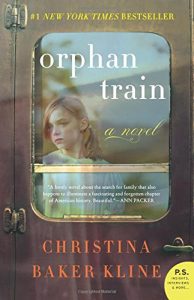 For a long time, I’ve had Orphan Train recommended (actually thrust upon me) by fellow readers, various bookstore customers, and, yes, even my Mom ~~ all opinions I value…but for some reason I never got around to reading it.
For a long time, I’ve had Orphan Train recommended (actually thrust upon me) by fellow readers, various bookstore customers, and, yes, even my Mom ~~ all opinions I value…but for some reason I never got around to reading it.
After my last two magical-mystical-tour reads, I was ready for some reality. I unearthed my long ignored copy of this popular novel and dove right in.
In case you’re one of the few (like me) who haven’t read this historical novel, I’ll give it a proper Book Barmy review.
It’s 2011 Maine and 17-year old Molly, a Penobscot Indian, has been sent from one foster home to another, from school to school, and has been in and out of trouble. Her most recent crime? Stealing a beat up paperback copy of Jane Eyre from the library.
(Sigh, Jane Eyre really? I’m already on her side, mentally figuring out the cost of a multiple times read mass market paperback to an entire library system, versus the cost of juvie –)
Molly is facing juvenile detention, when her boyfriend, Jack, offers up a solution. His mother, Terry, is a housekeeper for a 91-year old woman, who wants to clear out an attic of memorabilia. Jack suggests Molly do community service hours by helping Vivian clean the attic.
Together they form a prickly friendship and as they go through the boxes and mementos, the book switches narratives to 1929, when Vivian was nine-year old Niamh Power.
Her family emigrated from Ireland to the tenements of New York. Her father was a drunk and her mother depressed (although she taught Niamh excellent sewing skills). With both parents incapable, Niamh takes care of her siblings, especially her baby sister, Maise.
Then a horrible fire leaves Niamh an orphan, and she is herded onto an orphan train. These trains were arranged to take orphans from areas such as the New York tenements and give them to anyone who wanted a child. These children were left with people in the hopes that they would be given a good life. Some were, but many were nothing more than indentured slaves on remote and hardscrabble farms.
The author has created an unforgettable character in Niamh, who brings this little known part of our history alive. As an old woman, she helps the young Molly see that she is not the only orphan to suffer:
“I learned long ago that loss is not only probable but inevitable. I know what it means to lose everything, to let go of one life and find another. And now I feel, with a strange, deep certainty, that it must be my lot in life to be taught that lesson over and over again.”
Ms. Baker Kline did an extraordinary amount of research, and as a result, the story comes alive with rich details and colorful descriptions. I knew nothing about this part of history — orphan trains — and it’s as interesting and heartbreaking as it gets.
Orphan Train is a powerful read, both historically and emotionally.
I now join the legions who highly recommend this book.
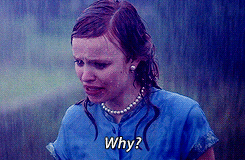 Now I’m a bit miffed at myself for waiting so long…
Now I’m a bit miffed at myself for waiting so long…
N.B. Ms. Baker Kline has new book — A Piece of the World about Christina Olson, the real life model in Andrew Wyeth’s “Christina’s World.
I’ll be reading this very soon.
No waiting this time.
The House at the End of Hope Street by Menna Van Praag
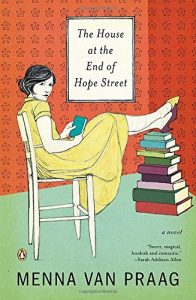 I was recently surprised to enjoy THIS book about reincarnation. Well, as if on a mission from another universe, another unusual book entered my orbit.
I was recently surprised to enjoy THIS book about reincarnation. Well, as if on a mission from another universe, another unusual book entered my orbit.
Really liking the cover, I opened this book on my Kindle, and before I knew it, I had read two chapters.
Magic, fantasy – not usually my cup of tea (true confession time, I only made through the first Harry Potter book), but I kept reading well into the night and finished The House at the End of Hope Street the very next evening.
When Alba, an extraordinarily smart woman experiences what she believes is a career-ending event, she wanders the streets with no idea what should happen next. That’s when a large Victorian house pops up out of nowhere, covered in fragrant wisteria and with a sense calm that emanates from within.
Peggy, the caretaker of the house, appears to expect Alba. And oh how the house welcomes her. In this house, the floors are soft under foot, the walls breathe and hug you, and one sees colors when words are spoken. Important notes flutter down from the ceilings for the intended recipient, and the framed portraits of past residents of the house, such as Agatha Christie, George Eliot, and Virginia Woolf chat away, giving advice and counsel.
Turns out this magical house has been rescuing extraordinary women, for 200 years. And each woman, including Alba, have 99 nights to stay in the house and turn their lives around.
“If you stay I can promise you this. This house may not give you what you want, but it will give you what you need. And the event that brought you here, the thing you think is the worst thing that’s ever happened? When you leave, you’ll realize it was the very best thing of all.”
Peggy, the 80+ caretaker of this magical house, is my favorite character. She lives in her own private tower of the house, entertains a mysterious lover every Sunday, eats cake for breakfast, and has an invisible cat named Mog.
We also learn the stories of Carmen and Greer, the other residents of the house, who also arrived heartbroken, hopeless, not knowing what to do:
“[each woman] must be allowed to feel her grief, must dive headlong into despair, before she can emerge again, her spirit richer and deeper than before”
One would think that Ms. Van Praag would have trouble creating believable characters in and among all this hocus pocus magic but each character is rendered with realistic layers of character flaws and redeeming talents.
But my favorite part of this book was the rooms that magically fill with objects to suit the occupant. Greer loves clothes so her room is filled with an amazing wardrobe. Alba loves books so her room is filled with the books the house thinks she should read. What’s not to like about that fantasy?
I felt quite buoyed upon finishing this book, believing the magic — that problems can be surmounted, that heartbreak can be lessened, and troubles put in their proper place.
Magic sure, but it’s Magically Delicious
A digital advanced readers copy was provided by Penguin Books via Netgalley.



